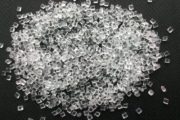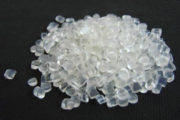
Polyacetal or polyoxymethylene (POM) has a low coefficient of friction, good dimensional stability, and high-temperature resistance.
Applications of polyoxymethylene (POM)
gears
bearings
valve and pump housings
lawn equipment
Plastic POM Injection Molding Processing Conditions
| Conditions Name | Value |
|---|---|
| Drying | Not usually required but the material should be stored in a dry atmosphere. |
| Melt Temperature | 180°C–230°C [356°F–446°F] for homopolymer 190°C–210°C [374°F–410°F] for copolymer |
| Mold Temperature | 50°C–105°C [122°F–221°F]. Higher mold temperatures are preferred for precision molding to reduce post-molding shrinkage. |
| Material Injection Pressure | 70–120 MPa |
| Injection Speed | Medium–high |
Runners and Gates of polyoxymethylene (POM)
Any type of gate can be used. Circular tapered gates should be as short as possible. Insulated, hot tip runners are preferred for homopolymers. Both internally and externally heated hot runners can be used with copolymers.
Chemical and Physical Properties of polyoxymethylene (POM)
Acetals are tough, resilient materials that exhibit good creep resistance, dimensional stability, and impact resistance even at low temperatures.
Acetal grades are either homopolymers or copolymers. Homopolymers have better tensile strength, fatigue resistance and hardness, but are difficult to process. Copolymers have better thermal stability, chemical resistance, and processibility. Both homopolymers and copolymers are crystalline and have low moisture absorption.
Copolymers can be used continuously at air temperatures up to 100°C [212°F]. Homopolymers have slightly higher temperature resistance. The many grades of acetal materials that are available can be tailored for different applications.
High crystallinity levels of acetals lead to relatively high shrinkage levels of 0.02–0.035 mm/mm. Differential shrinkage is observed with reinforced grades.









